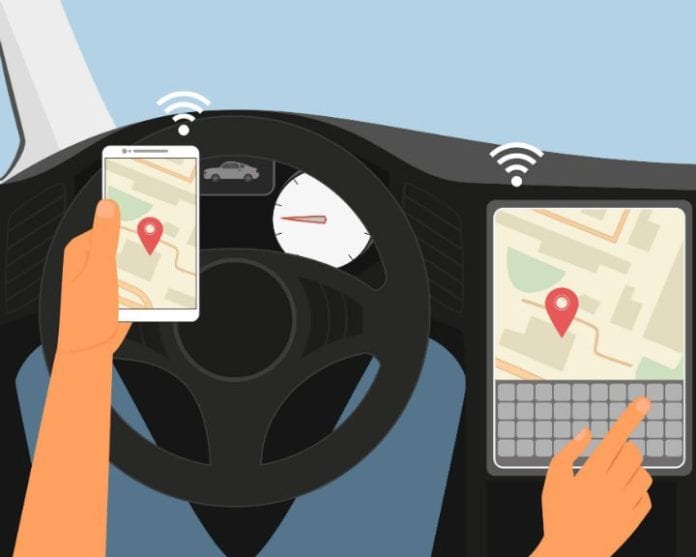The telematics market is expected to see continued growth as consumers look towards increased safety and cost savings.
Editor’s Note: With 2017 virtually upon us, RCR Wireless News has gathered predictions from across the mobile telecommunications space on what they expect to see in the new year.
Telematics is probably best known for its application in the auto insurance industry, where the technology is often used to power usage-based insurance programs. UBI programs allow policyholders to voluntarily track their driving habits and share the information with their insurance agency in return for discounts and incentives for good driving behavior or scores. While this new way of pricing insurance is growing in popularity, it is only the tip of the iceberg on the benefits that telematics can provide to both insurers and consumer policyholders. Here is a look at other applications for – and benefits of – telematics as we head into 2017.
Telematics takes UBI beyond premium discounts to include other “value-added” services from insurance carriers
Telematics offers so much more than simply driving scores for UBI discounts. While it is useful for analyzing driving for better rates and delivering personalized driving tips to improve safety, it can also make any car a “connected car,” providing additional benefits and communications for drivers. These can include alerts to road conditions on your route, weather hazards or vehicle maintenance needs, as well as on-demand assistance from your insurer in the case of a crash. Such offerings ensure that help is dispatched immediately, the claim is processed faster and policyholders can get back on the road quickly. They also help insurers to cut down on fraud and false claims.
UBI marketing and awareness will increase
With actual driving data strongly influencing the predictability of whether a consumer will have an insurance loss or not, telematics is now an important factor in the determination of insurance premium pricing. When compared to traditional rating variables, telematics data provides insurers with context about how a person drives and presents insurers with the opportunity to rate risk more accurately. Therefore, many are just beginning to adopt such policies and will become more proactive in marketing their UBI programs.
Insurance marketing will expand to drive awareness among consumers that they have new, personalized choices in how their policies are priced. No longer do consumers have to pay premiums solely based on variables such as averages of “like” individuals, or certain elements of a person’s credit history or other esoteric factors.
Millennials will drive UBI policy adoption
In August 2015, Willis Tower Watson reported that millennials show particularly strong interest in UBI policies – with 88% “interested” or “maybe interested” compared to 74% for other survey participants. Millennials are very cost conscious and socially aware, and they desire to do things that support those values. UBI is important to anyone who cares about being a better driver, creating safer roads and receiving the best value from their automobile insurance provider.
Data privacy will become less of a deterrent in adoption of UBI
For every piece of popular technology today – from drones to Apple iPhones, Snapchat to Twitter – privacy is a consideration. While the use of telematics data is no exception, we’re seeing consumers decide that the benefits outweigh any hazard. Drivers will continue to realize and become comfortable with sharing a little information in order to save money and gain valuable services, so it will be less of a deterrent to UBI and telematics adoption.
Insurers will be more strategic in choosing a telematics partner to power UBI programs
New telematics startups crop up every day. However, considerations when choosing a telematics partner to power a UBI program will become more data-focused and include things like whether or not your partner meets international standards and certifications. What is their experience in doing so? What levels of system security and data protection standards are available? While anyone can gather data, only the most experienced telematics providers – those who meet strict standards and know to analyze the data and put it into action for insurers – will dominate the market.
Telematics will put better drivers on the road
U.S. traffic deaths jumped an estimated 10% to 17,775 during the first half of 2016, compared with the year-ago period, according to the National Highway Traffic Safety Administration. With telematics educating drivers on their dangerous behaviors and making them more conscientious than ever, drivers will tailgate less, speed less and drive more carefully overall. Thousands of lives could be saved by preventing crashes caused by driver-related factors. Insurers will see a benefit to the bottom line. Better insights and better driving will mean fewer claims for insurers and less accidents for drivers. UBI programs and telematics aren’t only good for discounts, but for education on smarter driving and road safety.
Road safety will improve
While driving patterns will improve over time, evident in drivers’ improved scores and change in patterns such as less hard cornering, hard braking and tailgating, telematics will also improve road safety and awareness. With weather alerts, road condition alerts and even monitoring a driver’s alert level, this technology will continue to make our roads and infrastructure safer and improve the relationship between consumers and insurance companies.
Insurers will see less fraudulent claims
With telematics providing insights on exactly what happens in a crash – including rate of speed, car location and even driver injury such as whiplash, fraud will continue to be diminished by 4% to 15% of total claim value. Late accident reporting will also continue to go down.
Insurance and policyholders become closer
As the automotive market evolves, so too must the insurance industry. Telematics allows insurers to innovate their approach to claims, customer service and interaction – successfully moving from a low-touch “only when you need us” model to a high touch “proactive and always there for you” business model, resulting in increased revenue, less risk and long lasting customer relationships.
By 2020, 90% of cars will have embedded connectivity
There will also be new opportunities for telematics even with the growing popularity of autonomous cars. There will be a stronger need to collect and analyze data from the connected, autonomous car because not only is there data in the information that comes from the car itself, but there is information that comes from the contact – the contextual data. For now, fully self-driving cars are a ways from being mainstream. While we move toward their adoption, telematics will continue to make any car a “connected car,” able to provide game-changing safety gains if human drivers improve their behaviors: less tail gaiting, no driving while under the influence, obeying speed limits and other traffic laws, and other high scoring behaviors that telematics can continue to alert and educate drivers – and insurers – about.

Nino Tarantino is the North American CEO of Octo Telematics, the global leader of advanced telematics systems and services to the automotive and insurance industries. Under his leadership and applied global telecommunications knowledge, North American operations passed 1.5 million telematics policies users throughout the U.S. and Canada just four years after its launch in 2011. Tarantino is also board director of the Connected Vehicle Trade Association, a non-profit business league established to facilitate the interaction of the entities involved in the vehicle communication environment. He is a frequent speaker at industry events on subjects such as crash and claims management, insurance technology, telematics and UBI. Connect with him on Linkedin or follow him on Twitter @ninotarantino.

